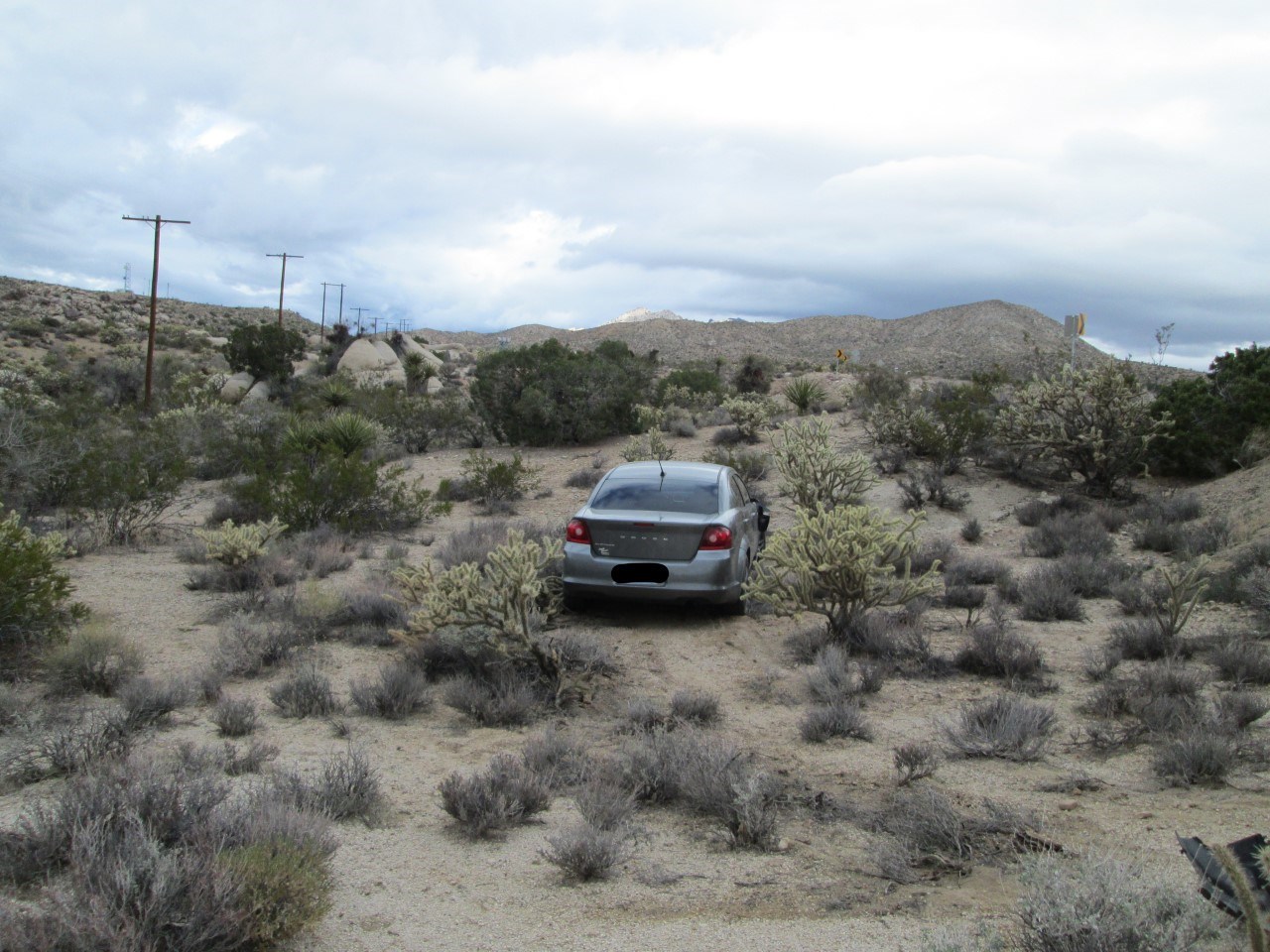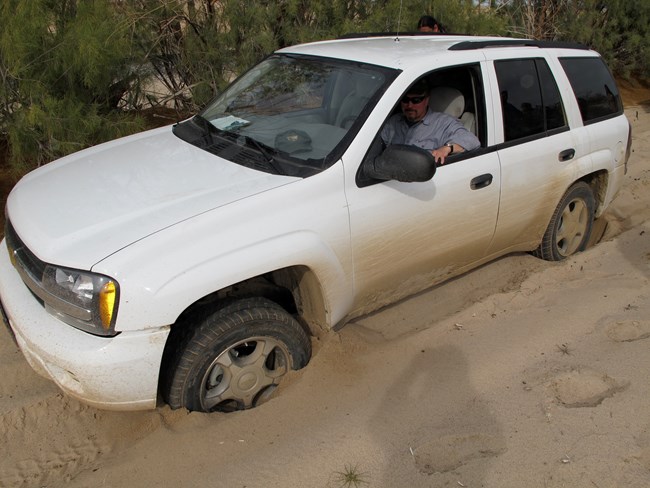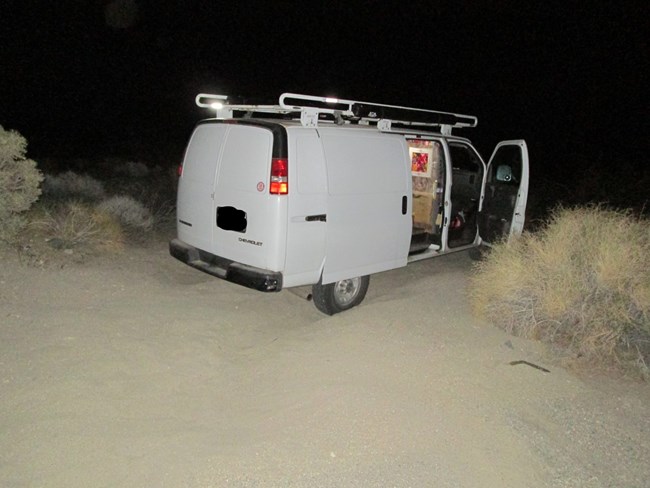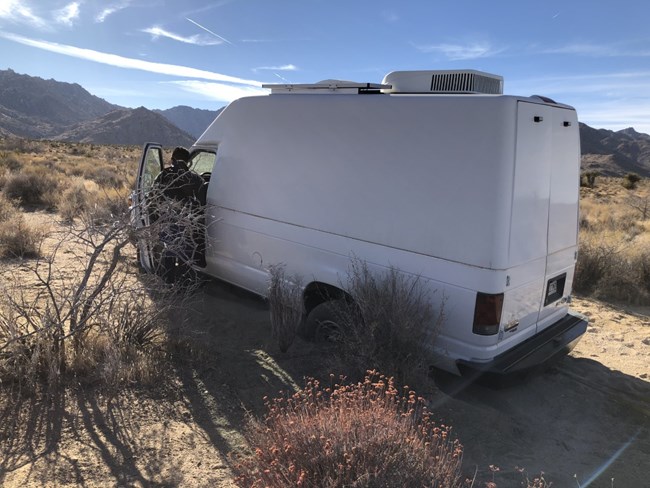
NPS You are responsible for your own safety.In this remote place, you must be able to self-rescue and self-reliance is essential. Mojave National Preserve is a scenic wonder but it is also a truly rugged place. A visit here means leaving the safety net of the modern world behind. Be sure to check current road conditions and vehicle requirements before heading out. 
NPS
Staying with your car is the most important thing you can do in the event of an emergency. People have died from exposure trying to walk back to the paved roads. 
NPS Recommended Safety Equipment and SuppliesA high clearance 4x4 with tires designed for off-pavement use is the most important safety item you need. 24-hour Emergency or Missing Persons: (702) 293-8998
Roads Risk AssessmentUse roads at your own risk. While very rare, people have died here while many others were rescued just in the nick of time. They didn't fully appreciate the risks, traveled in a vehicle not equipped for the conditions on a remote, seldom traveled road, or didn't let anyone know where they were going. They lacked a satellite communication device to call for help and didn't pack enough equipment, warm clothing, food, or water. Do not overestimate the capability of your vehicle. Some roads are fine for stock high clearance 4x4 pickups and SUVs. Third party tow bills often reach hundreds or thousands of dollars. Rangers are happy to provide you advice about a trip plan or to discuss your equipment. Contact Us Always assume the road will get worse ahead. If it gets too rough for you, turn around! Potential Road HazardsRoad Conditons: Due to the sheer size of the region and the number of roads in the Preserve, it is not possible to provide updated travel conditions. Expect and be prepared for poor conditions. Don't go if it looks bad or rain is forecast. Summer Weather: During the summer monsoon season (June - September), it is better to travel in the morning. Storms usually occur after 1pm. Winter Snow and Ice: Planning on travel in areas above 3,000 feet? Check road conditions with a ranger. Contact info at the bottom of the page. Roads at this elevation may be saturated from rain or snow and impassible. There are very few people to help you if you break down. Temperatures can drop well below freezing. The short days of winter surprise hikers who may need to finish their hike by headlamp. Cattle: This is ranch country. Expect cattle standing in the road on blind corner and especially in the dark. Black cows on a moonless night have resulted in many accidents where people were driving too fast for the conditions. Tires DefinedAll-Terrain/Mud Terrain Tires: For full size vehicles the ideal tire is a good condition E-Range All-Terrain tire. Examples of All-Terrain tires include BF Goodrich AT/KOs, Cooper ST-Maxx tires, Firestone Destination ATs, etc. This is a tire that has a very thick rubber tread, more flexible rubber, and much stronger steel belts inside the rubber to handle driving over rocks. Load range E is equivalent to a 10-ply tire, where there are 10 layers of reinforcement in the tire. Load Range D tires are equivalent to 8-ply tread, and C is equivalent to 6-ply tread. You also want 3-ply sidewalls on your tires as the rougher roads have rocks along them that will rip open thinner sidewalls.

NPS Tire PressureLowering the tire pressure greatly increases traction by flattening out the tire. Many new vehicles including pickups come with tire pressures up to 75 pounds per square inch. This is very high pressure. Many off-road motorists lower their tire pressure to 20 psi when traveling on soft sand, then fill the tire back to recommended pressure when they return to pavement. The risk with highly pressurized tires on unpaved roads are blowouts. As tires go over rocks they are so rigid from the high pressure they can't flex and absorb rocky surfaces, so instead they rupture. What is the difference between a 4x4 and All Wheel Drive (AWD) vehicle?
Clearance DefinedHigh Clearance: Any factory stock full or mid-size 4x4 pickup or SUV. Running boards, step bars, and plastic bumpers can get ripped off when going over rough sections. Moderate-clearance crossover vehicles as well as some station wagons designed for off-pavement used would be considered Medium Clearance and can travel many Preserve roads so long as they are equipped with off-pavement tires. Wheelbase DefinedShort Wheelbase: These are vehicles where the front and rear axles are closer together, as well as 4x4 pickup trucks with a short bed (less than 6' long) and a regular cab. Short wheelbase vehicles create a situation where the rear tires start to climb a hump in the road or obstacle before the front tires go down the other side. This lifts the center of the vehicle up and over the hump, preventing scraping. Bumpers and Running Bars Defined
|
Last updated: February 19, 2025
